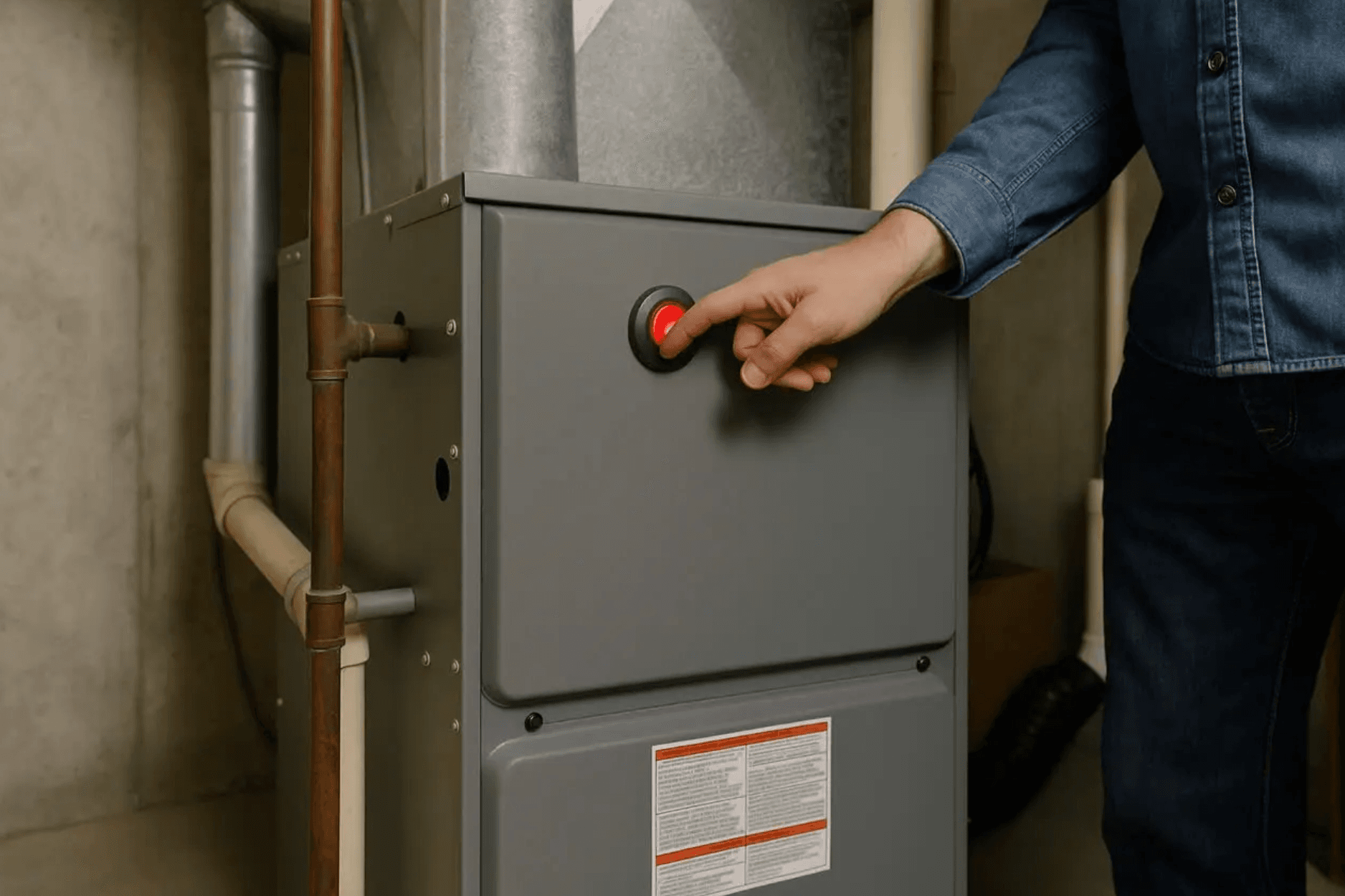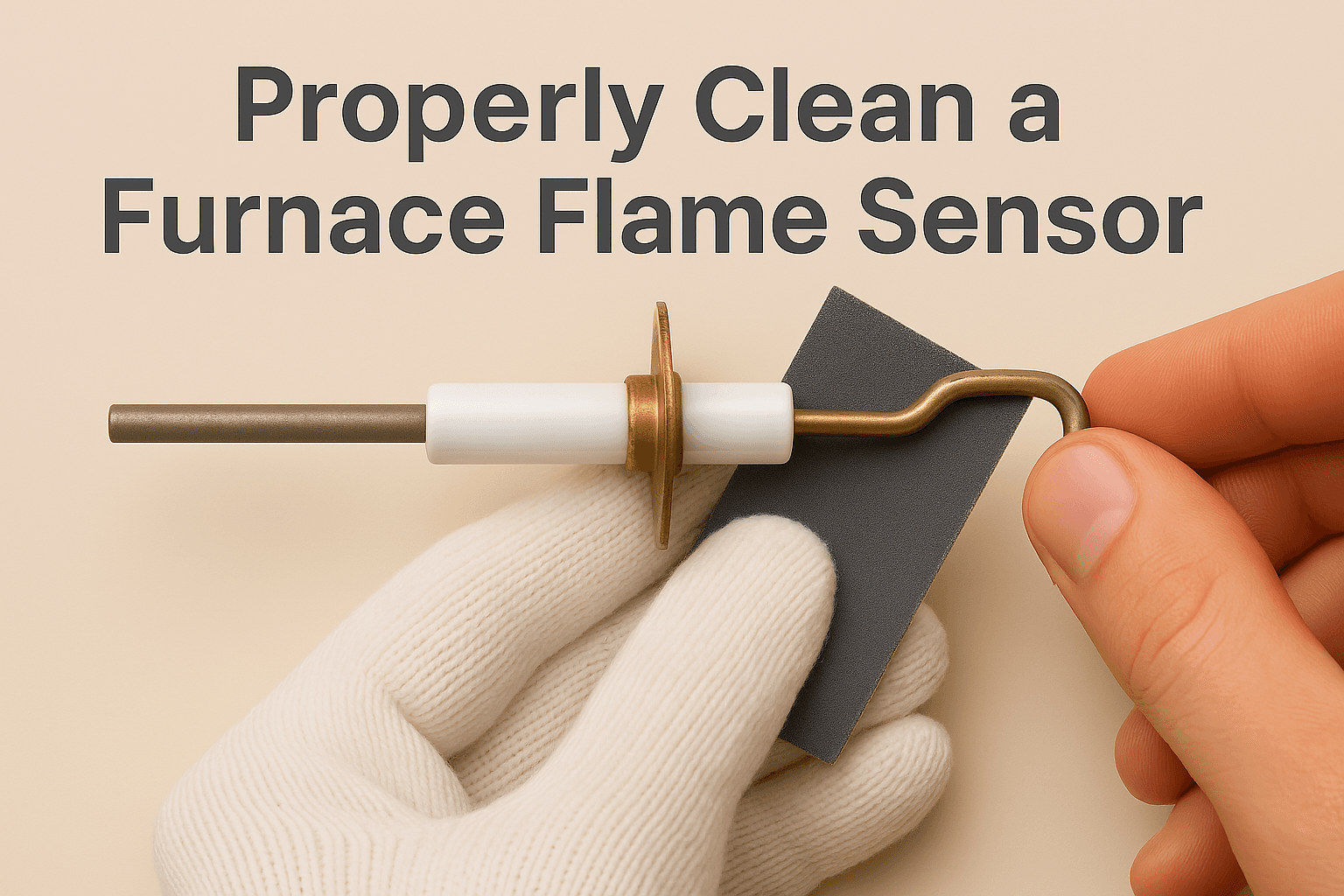How-To Guides
9 Reasons Your Furnace Won’t Stay On and How to Fix Them
AZparts Team
Updated on December 1, 2025
9 min read
Is your furnace wont stay on and leaving your home unexpectedly cold? This common issue can be caused by a clogged air filter, faulty flame sensor, overheating, or a malfunctioning thermostat. AZParts helps you troubleshoot efficiently and find the right replacement parts to get your furnace running smoothly and your home warm all season.

1. Common Furnace Problems That Cause Sudden Shut-Off
If your furnace not staying on or keeps shutting off frequently, it’s often a sign of a deeper issue that needs prompt attention. This short-cycling problem can cause discomfort, increase energy bills, and even damage your heating system over time. Understanding what causes these sudden shut-offs is an important part of effective gas furnace troubleshooting. By pinpointing the most common triggers, you can take the right steps to restore steady, efficient furnace performance.
1.1. Thermostat Malfunctions Can Disrupt Furnace Operation
A faulty thermostat is one of the most common reasons a furnace does not stay on or shuts off too early. When the thermostat sends inaccurate temperature readings, it disrupts the heating cycle and causes inconsistent operation. Poor calibration can also make the system misread room temperatures, leading to frequent on-and-off cycling.
Incorrect thermostat settings can create similar issues. If the temperature is set too low or the system mode isn’t selected properly, the furnace may not run as expected. Making sure your thermostat is calibrated and programmed correctly helps keep your furnace running steadily and prevents unnecessary strain on the system.

A faulty thermostat is one of the most common reasons a furnace may operate inconsistently (Source: AZParts)
1.2. Dirty or Clogged Filters Reduce Airflow and Trigger Shutdowns
Furnace filter issues are a common cause of reduced airflow and frequent system shutdowns. When filters become dirty or clogged, air cannot move freely through the furnace, leading to overheating or incomplete cycles. This lack of proper airflow may cause the furnace to shut off unexpectedly as a protective measure.
Knowing how often to change a furnace filter is key, most homeowners should check filters monthly and replace them at least every 90 days. Ignoring this maintenance task not only affects system performance but also increases energy usage. If you notice low airflow in the furnace or inconsistent heating, start by inspecting the filter.

When filters become dirty or clogged, air cannot move freely through the furnace (Source: AZParts)
1.3. Pilot Light Keeps Going Out or Won’t Stay Lit
Pilot light issues are a common reason the flame won’t stay lit on furnace systems, preventing the unit from staying on or igniting at all. A weak or flickering flame often signals a dirty or faulty thermocouple, while drafts or gas supply problems can also cause the flame to extinguish unexpectedly.
If the pilot light keeps going out, relighting it may offer a temporary fix, but deeper troubleshooting is usually required. Because a steady pilot flame is essential for safe burner ignition, any disruption can stop the furnace from running. When your furnace won’t stay on, the pilot light should be one of the first components you inspect.

A weak or flickering flame may indicate a dirty or malfunctioning thermocouple (Source: AZParts)
1.4. A Faulty Flame Sensor May Be Shutting Off Your Furnace
A dirty or damaged flame sensor can cause a furnace to shut down prematurely. This small yet critical part detects whether the burner flame is present. If the sensor is dirty, it may not register the flame, leading the system to cut off the gas supply as a safety precaution. Regular flame sensor cleaning helps maintain proper function and prevents false shut-offs. Common flame sensor failure symptoms include the burner turning off a few seconds after ignition or the furnace failing to start. If cleaning doesn’t restore function, a furnace flame sensor replacement may be necessary.

If the sensor is dirty, it leads the system to cut off the gas supply as a safety precaution (Source: AZParts)
1.5. Inconsistent or Insufficient Gas Supply Can Disrupt Operation
Gas supply issues often lead to unreliable furnace operation. If your system lacks consistent fuel flow, it may struggle to ignite or maintain a stable burn. Problems with the furnace gas valve, such as blockages or malfunctions, can reduce fuel delivery and trigger shutdowns. Additionally, low natural gas pressure in the furnace system can prevent proper combustion. These issues not only reduce heating efficiency but also pose safety risks. Having a technician inspect the gas line and valve ensures the furnace receives adequate fuel to operate reliably.

Problems with the furnace gas valve can reduce fuel delivery and trigger shutdowns (Source: AZParts)
1.6. A Bad Limit Switch Can Cause Frequent Shutdowns
The furnace limit switch plays a vital role in furnace safety by detecting high internal temperatures. When functioning correctly, it prevents the system from overheating by shutting it down as needed. However, limit switch failure may cause unnecessary shutdowns, even if the furnace is not truly overheating. This can interrupt the heating cycle and lead to inconsistent comfort. As part of furnace overheating protection, the switch should respond only to genuine threats. If your furnace shuts off too often, it may be necessary to reset the high limit switch or replace it entirely to restore proper function.

Limit switch failure may cause unnecessary shutdowns, even if the furnace is not truly overheating (Source: AZParts)
1.7. Blocked or Leaky Air Ducts Interfere with Heat Distribution
Furnace duct issues can severely impact heat distribution throughout your home. Blocked air vents or collapsed ductwork restrict airflow, causing rooms to remain cold even when the furnace runs. Leaks in the duct system can also let warm air escape before it reaches its destination. These furnace airflow problems can stress the entire system, forcing it to work harder and potentially triggering shutdowns. Inspecting and sealing ductwork helps ensure balanced airflow and more efficient operation. If airflow feels weak or uneven, checking for duct obstructions should be a top priority.
1.8. Overheating Can Trigger Emergency Shut-Off
Furnace overheating is a serious issue that can activate built-in safety mechanisms to shut the unit off. When internal temperatures exceed safe limits, the system may power down to prevent damage. Common furnace overheating symptoms include short cycling, burning smells, or unusually hot exterior panels. A cracked heat exchanger or restricted airflow is often to blame. These components are critical for maintaining safe operation and protecting against carbon monoxide leaks. Monitoring furnace temperature limits and keeping components clean can help avoid these emergency shutdowns.

Common furnace overheating symptoms include short cycling, burning smells, or unusually hot exterior panels (Source: AZParts)
1.9. Electronic Ignition Problems Prevent Reliable Startup
Modern gas furnaces often rely on electronic ignition systems instead of standing pilot lights. Issues with these systems, such as hot surface ignitor problems, can prevent the furnace from starting at all. If the furnace ignitor fails to reach the necessary temperature, the gas won’t ignite, and the furnace will remain off. Problems with the furnace electronic ignition can also cause intermittent startups, leading to cold indoor temperatures and frustration. Gas furnace ignition failure may require cleaning, testing, or replacing the ignitor to restore consistent heating performance.

Problems with the furnace electronic ignition can also cause cold indoor temperatures and frustration (Source: AZParts)
2. FAQs
2.1. Why does my furnace turn on then shut off right away?
If your furnace turns on and shuts off almost immediately, this may indicate a problem known as short cycling. In many cases, a clogged air filter is the primary cause. When airflow is restricted, the system overheats quickly and shuts down as a safety measure. A faulty flame sensor can also prevent the furnace from detecting a stable flame, leading to an early shutdown. Additionally, thermostat malfunctions or incorrect settings can cause the system to misread temperatures and shut off too soon. Regular maintenance and timely part replacements are essential for resolving this issue and ensuring consistent operation.
2.2. Why does my furnace run for a few seconds and stop?
When your furnace runs for just a few seconds before stopping, the problem often lies with ignition failure or poor flame detection. A dirty or malfunctioning flame sensor may fail to verify the presence of a flame, prompting the control board to shut down the system. Similarly, problems with the electronic ignition system, such as a weak spark or faulty hot surface ignitor, can prevent proper ignition. Inconsistent gas pressure or a blocked flue can also disrupt the burn cycle. A thorough inspection of these components helps identify the root cause and prevent further interruptions.
2.3. Why does my furnace start to burn then suddenly stop?
A furnace that begins to burn but shuts off shortly after ignition usually signals a safety-related issue. One of the most common causes is a dirty flame sensor that cannot confirm a steady flame, forcing the furnace to cut off the gas supply to avoid hazards. Overheating due to blocked airflow or a malfunctioning limit switch can also cause the system to stop burning mid-cycle. In some cases, gas valve issues or problems with the thermostat may interfere with proper operation. Identifying and fixing the faulty component is critical to restoring your furnace’s normal burn cycle.
f
A furnace that shuts off unexpectedly is more than just inconvenient, it can disrupt your comfort and inflate energy costs. By learning the common reasons why your furnace won't stay on, you can take informed steps toward fixing the problem. Whether it’s replacing a flame sensor, checking your thermostat, or improving airflow, AZParts offers the reliable components you need to restore consistent heating. Visit AZParts today to find quality furnace parts that help keep your system running smoothly.
Contact Information:
8 The Green, Ste A, Dover, Delaware 19901-3618, United States
Furnace
- 1. Common Furnace Problems That Cause Sudden Shut-Off
- 1.1. Thermostat Malfunctions Can Disrupt Furnace Operation
- 1.2. Dirty or Clogged Filters Reduce Airflow and Trigger Shutdowns
- 1.3. Pilot Light Keeps Going Out or Won’t Stay Lit
- 1.4. A Faulty Flame Sensor May Be Shutting Off Your Furnace
- 1.5. Inconsistent or Insufficient Gas Supply Can Disrupt Operation
- 1.6. A Bad Limit Switch Can Cause Frequent Shutdowns
- 1.7. Blocked or Leaky Air Ducts Interfere with Heat Distribution
- 1.8. Overheating Can Trigger Emergency Shut-Off
- 1.9. Electronic Ignition Problems Prevent Reliable Startup
- 2. FAQs
Further Reading
Further Reading





